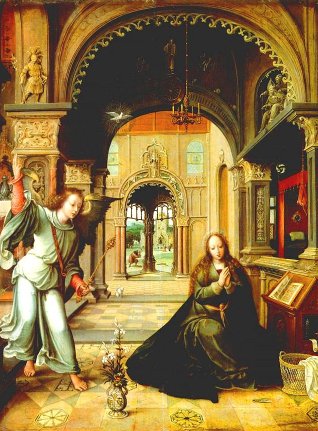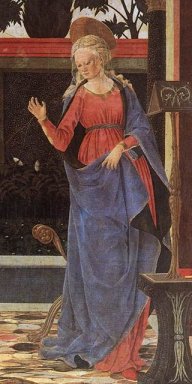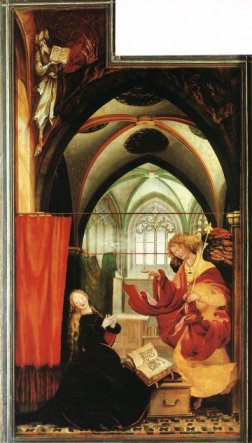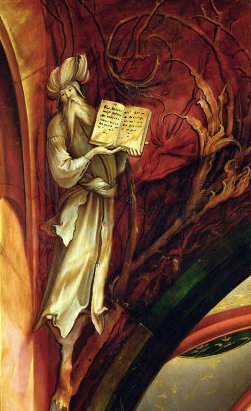|
Signs and Symbols -
Props and Bric-a-brac |
|||
|
A word of caution. Art historians do like to 'interpret' every item in a painting. As suggested in the section on living symbols, these interpretations are generally valid and are the work of detailed scholarship, but occasionally they can be spurious, and in any case there is no guarantee that experts will agree on what they represent. Sometimes it is better simply to enjoy the painting rather than agonise over every item the artist has included. |
|||
|
Workbasket |
|||
|
|
|
||
|
Mary's Clothing |
|||
|
|
|
|
|
|
You
may have noticed that although the scarlet is there, the purple
looks distinctly - bluish. So why didn't artists go for a real
purple? Ultramarine Blue was the most expensive pigment used by Renaissance artists. It was made from powdered lapis lazuli; cheaper blue pigments had a poorer colour and were less stable. Ultramarine, therefore, could be seen to represent the Tyrian Purple dye. For the Virgin, only the best would do. |
|||
|
Book The Virgin is frequently seen reading a book, and this reflects the wisdom with which she in endowed. But what is she reading? The Old Testament is the obvious candidate, in particular the book of Isaiah which foretold the virgin birth: Behold, a virgin shall conceive, and bear a son, and shall call his name Immanuel. In this wing from the Isenheim Altarpiece by Grunwald, this is reinforced by Isaiah himself, who appears in the top left-hand corner with his book open. |
|||
|
|
|
||
|
Left wing and detail.
Musée d'Unterlinden, Colmar |
|||
|
This Annunciation by Joos van Cleve (below) is almost an encyclopaedia
of Annunciation imagery. The dove and the vase of lilies are familiar symbols we have met before. Vases and pitchers represent Mary as a pure vessel in which to receive the Holy Ghost. This is underlined by the washing paraphernalia at the back of the picture. These stand on a piece of furniture with a distinct altar-like appearance, which gives them the feel of a communion cup and patten. The comfortable bed is clearly a symbol of motherhood. Curtains are a frequent feature of Annunciations: see the Grunwald detail above. They represent revelation, the moment when the curtains are pulled aside. The temple in which Mary worked is described as having curtains or veils, used to hide the Holy of Holies. This was the veil that was 'rent' on the death of Christ. (Matthew 27 v 51) Candles often appear. An unlit candle, such as the ones on the chandelier, can represent the life that has yet to be born, i.e. Christ. But note the lit candle above Gabriel. The candles in this picture might represent the journey from the heavenly world to the physical world. The pictures on the back wall are interesting. The one that looks like a poster is of Moses, considered a significant precursor of Christ. The small diptych has the words 'Abraham' and 'Melchizedek' under paintings. Melchizedek is a king that gives bread and wine to Abraham (Genesis chapter 14.) Thus the picture reinforces the communion references already made. |
|||
|
|
|||







